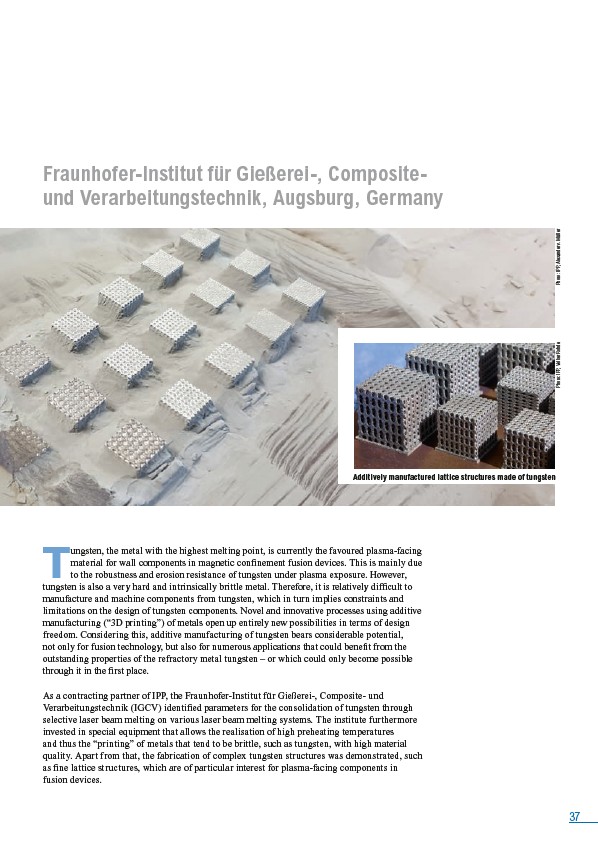
37
Fraunhofer-Institut für Gießerei-, Composite-
und Verarbeitungstechnik, Augsburg, Germany
Additively manufactured lattice structures made of tungsten
Tungsten, the metal with the highest melting point, is currently the favoured plasma-facing
material for wall components in magnetic confinement fusion devices. This is mainly due
to the robustness and erosion resistance of tungsten under plasma exposure. However,
tungsten is also a very hard and intrinsically brittle metal. Therefore, it is relatively difficult to
manufacture and machine components from tungsten, which in turn implies constraints and
limitations on the design of tungsten components. Novel and innovative processes using additive
manufacturing (“3D printing”) of metals open up entirely new possibilities in terms of design
freedom. Considering this, additive manufacturing of tungsten bears considerable potential,
not only for fusion technology, but also for numerous applications that could benefit from the
outstanding properties of the refractory metal tungsten – or which could only become possible
through it in the first place.
As a contracting partner of IPP, the Fraunhofer-Institut für Gießerei-, Composite- und
Verarbeitungstechnik (IGCV) identified parameters for the consolidation of tungsten through
selective laser beam melting on various laser beam melting systems. The institute furthermore
invested in special equipment that allows the realisation of high preheating temperatures
and thus the “printing” of metals that tend to be brittle, such as tungsten, with high material
quality. Apart from that, the fabrication of complex tungsten structures was demonstrated, such
as fine lattice structures, which are of particular interest for plasma-facing components in
fusion devices.
Photo: IPP, Volker Rohde Photo: IPP, Alexander v. Müller